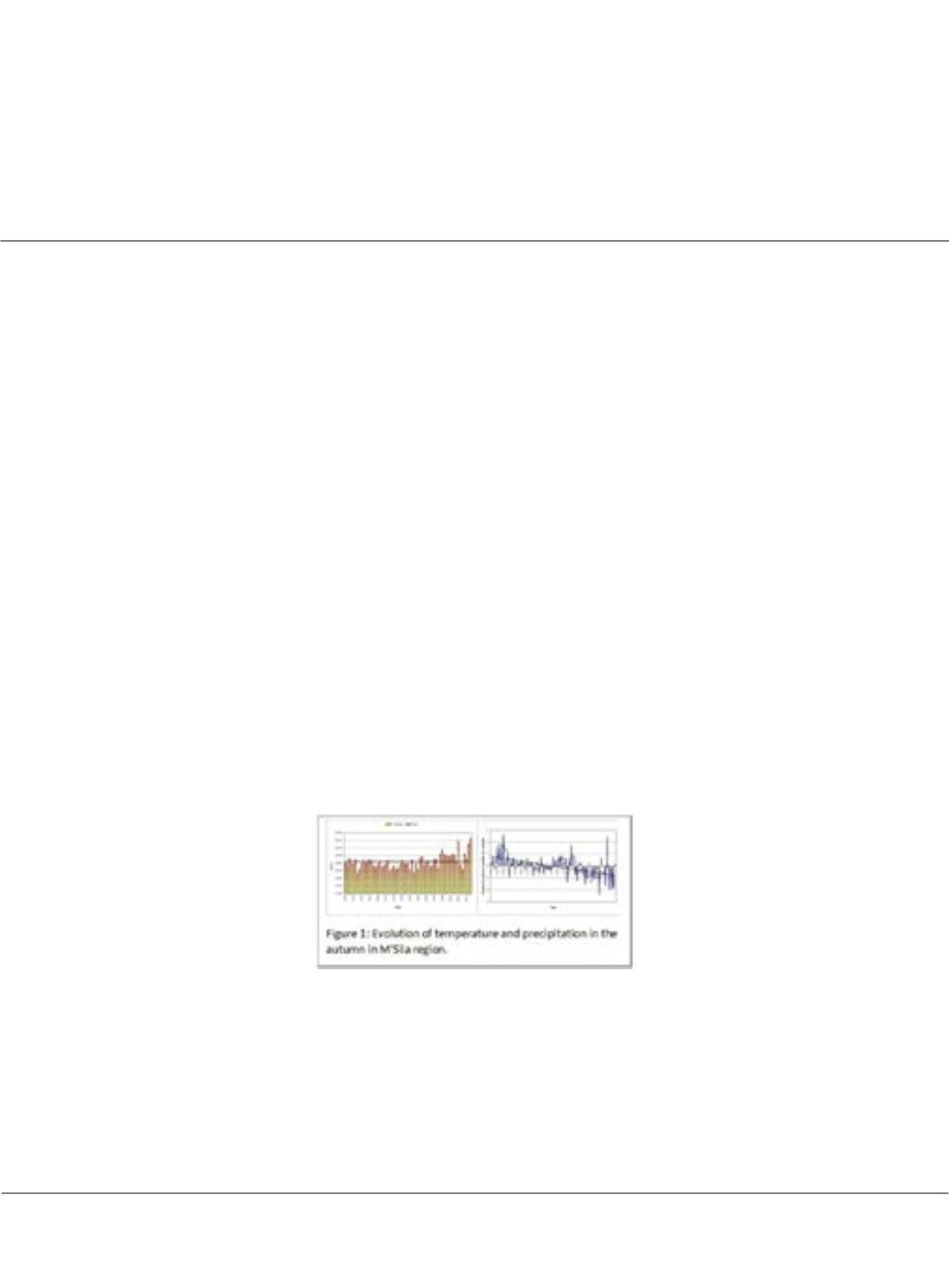

Page 30
conferenceseries
.com
September 02-03, 2019 | Berlin, Germany
6
th
World Conference on Climate Change
Volume 10
Journal of Earth Science & Climatic Change
ISSN: 2157-7617
Climate Change 2019
September 02-03, 2019
Climate change in three different zones in Algeria
Nabila Ihaddadene
1
, Razika haddadene
1
and
Marwan Mostfaoui
2
1
M’Sila University, Algeria
2
M’Sila Weather Meteorological Station, Algeria
Statement of the Problem:
Climate change felt by people around the world is a consequence of the excessive use
of conventional energy sources. Greenhouse gases, especially CO
2
released when using fossil fuels is responsible for
the warming of the earth. Climatology is the study of climate, which is the sequence of weather conditions over long
periods. Precipitation and temperature are the two fundamental variables used in describing climate change.
Methodology & Theoretical Orientation:
This investigation examines air temperature and precipitation trends of
three regions of Algeria namely; M’Sila, Biskra, and In-Amenas from 1950 to 2003. M'Sila is a province (wilaya) of
northern Algeria. It is located at 35°40’N and 04°30’E. Its average height from sea level is 441 m. Biskra is a province
(wilaya) of southeast Algeria. It is sited at 34°51’N and 05°44’E. Its average height from sea level is 87 m. In Amenas
is a town and municipality of southeast Algeria. It is located at 28°02’N and 09°33’E. Its average height from sea level
is 600 m.
Findings:
It was found that the warming trend was particularly enhanced over these regions for all seasons (autumn,
winter, spring and summer). Annual rainfall of M'Sila and In Amenas was reduced, however, Biskra knows a slight
increase in rainfall. For all regions studied, autumn in recent years loses its characteristics of the agricultural season
since it records a lack of precipitation. In contrast, summer season generally characterized by a lack of rainfall lately
knows a slight increase. Spring and winter of M'Sila know a lack in rainfall. Whereas in Biskra and In Amenas they
record a slight increase.
Conclusion & Significance:
As a result of warming, M’Sila presents an aridity trend. It was a semi-arid area, and
is now ranked in the arid zone. The zones of Biskra and Amenas remain arid. In fact, air warming is affected by the
soil cover.
Recent Publications
1. N, Ihaddadene R, Betka A (2018) Experimental investigation of using a novel insulation material on the
functioning of a solar thermal collector. Journal of Solar Energy Engineering 140 (6), 061001.
2. Ihaddadene N, Ihaddadene R, Betka A, Beghidja A.H (2017) Experimental study of the effect of soil type on
global warming using laboratory thermal collector. International Journal of Hydrogen Energy 42 (30): 19576-
19582.
3. Ihaddadene N, Ihaddadene R, Charik A (2017) Best Tilt Angle of Fixed Solar Conversion Systems at M’Sila
Region (Algeria). Energy Procedia (118): 63-71.
Nabila Ihaddadene et al., J Earth Sci Clim Change 2019, Volume: 10
















